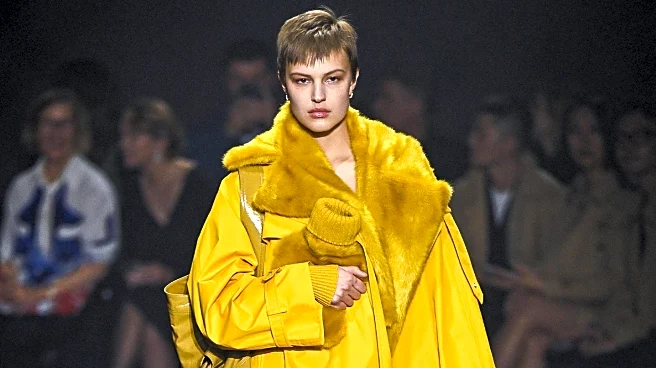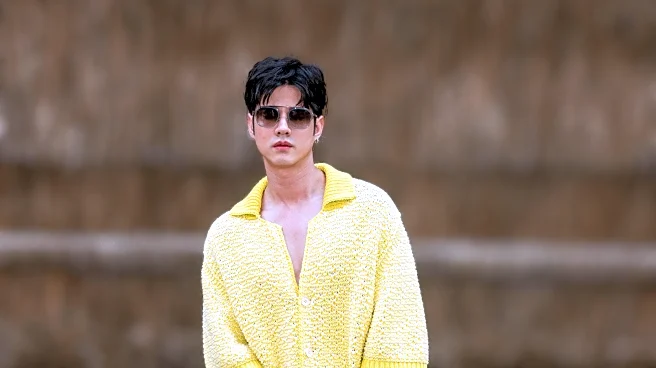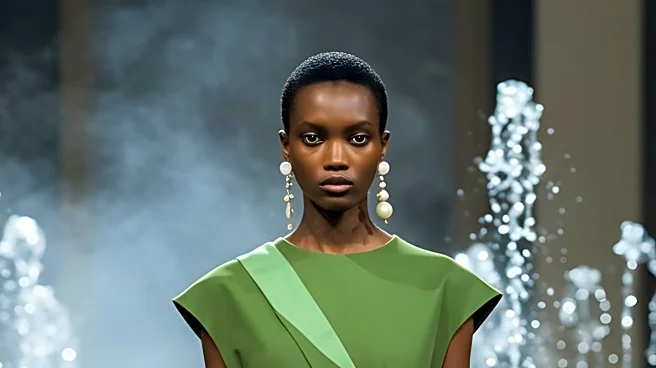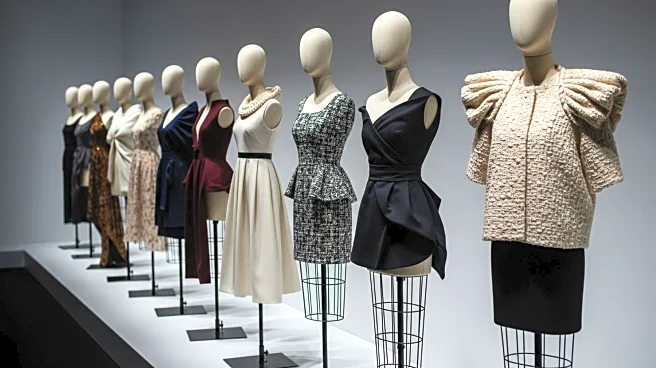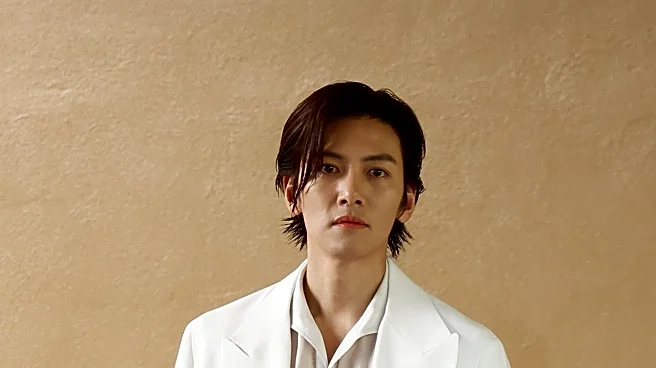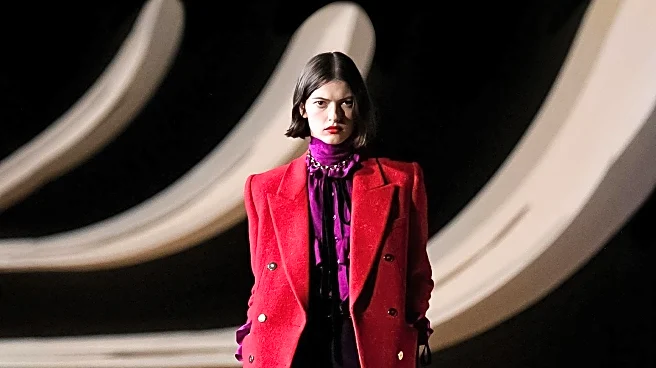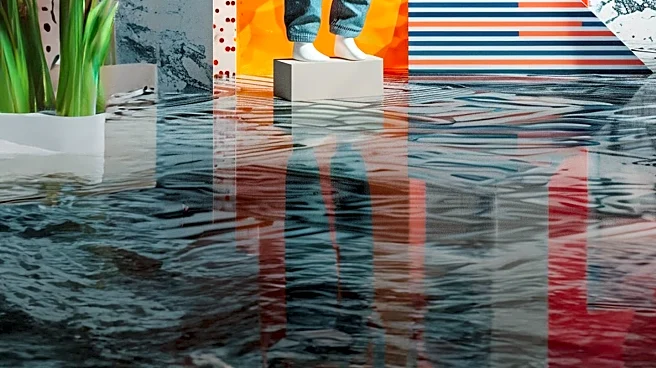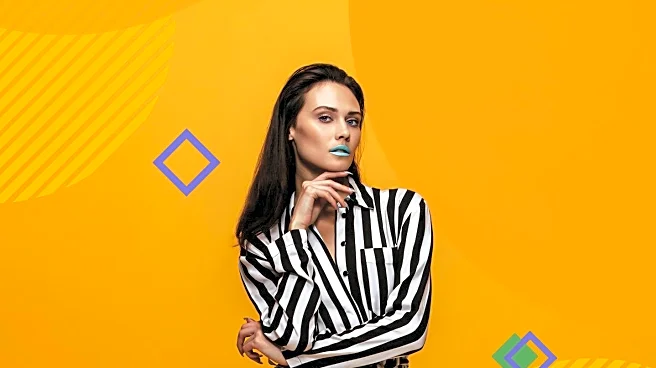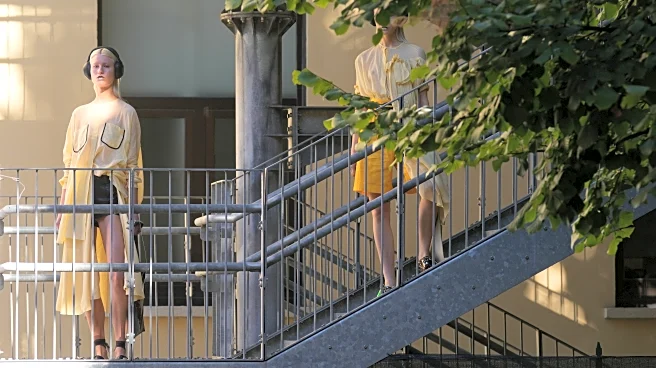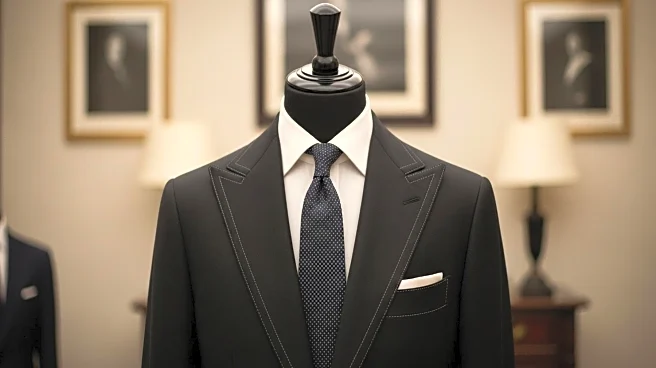What's Happening?
The Milan Fashion Week Spring 2026 collections showcased a variety of nostalgic beauty trends that are expected to influence U.S. fashion. Designers such as Max Mara and Giorgio Armani drew inspiration from historical figures and styles, including Madame De Pompadour and Queen Elizabeth II. Hair gel, a staple of past decades, is making a comeback, as seen in Prada's collection. The event also featured classic feline eyeliner flicks at Dolce & Gabbana, precise winged eyeliner at Blumarine, and sultry versions at Bottega Veneta. These trends highlight a blend of historical and modern aesthetics, emphasizing both elegance and practicality.
Why It's Important?
The resurgence of nostalgic beauty trends at Milan Fashion Week is likely to impact U.S. fashion and beauty industries by reviving classic styles with a modern twist. This could lead to increased demand for vintage-inspired products and techniques, influencing consumer preferences and marketing strategies. The emphasis on historical elegance may also inspire U.S. designers to incorporate similar elements into their collections, potentially affecting retail and beauty sectors. As these trends gain popularity, they may shape the future of fashion and beauty standards in the U.S., promoting a blend of tradition and innovation.
What's Next?
As these nostalgic trends gain traction, U.S. fashion and beauty brands may begin to integrate similar styles into their offerings. This could lead to collaborations between American designers and international brands, fostering a global exchange of ideas. Retailers might adjust their inventory to include more vintage-inspired products, while beauty salons could offer services that replicate these runway looks. Additionally, fashion influencers and media outlets may play a significant role in popularizing these trends, driving consumer interest and shaping industry standards.
Beyond the Headlines
The revival of nostalgic beauty trends raises questions about cultural appropriation and the ethical implications of drawing inspiration from historical figures and styles. As designers reinterpret past aesthetics, they must navigate the fine line between homage and exploitation. This trend also highlights the cyclical nature of fashion, where past styles are continually reimagined to fit contemporary tastes. The blending of historical and modern elements may encourage a deeper appreciation for fashion history and its influence on current trends.

